Luna Productions for Teaching Channel
Defining Bullying for Parents
Nicholas Carlisle
C0203-002001
Narrator:
Almost every school suffers from the impact of bullying. To find solutions, schools like Alvarado Elementary in San Francisco, California form partnerships with parents and holding workshops like the one you are about to see.
Title: "Defining Bulling for Parents."
Principal Robert Broecker: "Tonight we have a parent workshop, 'how to bully-proof your child' as part of our ongoing effort at anti-bullying at Alvarado Elementary School."
Narrator:
Reaching out to experts and established programs is a key part of any school's anti-bullying effort. To lead this workshop for parents, Principal Broecker has invited Nicholas Carlisle, of the No Bully organization.
Carlisle: "Bullying is a subject that touches so many students and so often they say it’s the biggest challenge in their lives. So thank you for coming out for a subject that is so important for so many of your children."
Carlisle: Tonight was our unrolling of the program to the parents.
Narrator:
For the parents, the workshop provides needed information about what the school is actually doing, what the parents can do, and information about bullying itself.
Carlisle: "And it’s an emotional subject, whether your kid is bullying or being a target of bullying, we feel it. And the tricky thing about these parent workshops is we sometimes feel it so much that these workshops can get quite heated and people can start to blame and criticize.
Narrator:
Nicholas begins with an unusual request, but one which creates a safe space for all parents to participate.
Carlisle: "And my request is that if you are concerned about your students, talk to Robert the principal here or talk to the classroom teacher direct. Today is not a forum to discuss such a day and it is certainly not a forum to criticized individuals by name, whether they are teachers, students or fellow parents. Can you all agree to that? Is that ok? Great."
Narrator:
The next step is to define bulllying.
Carlisle: "As you look at this slide here, 'Is this bullying?' What do you think? Yes?"
Parent: "Does it happen every day?"
Carlisle: "Does it happen every day? What would that tell you if it happened every day?"
Parent: "That it is a repeated behavior. That it’s occurring more than just one time."
Carlisle: "Right so if it’s a repeated behavior and, if it happened just once, would it be bullying?"
Parent: "Possibly not."
Carlisle: "Possibly not, yeah so the definition of bullying is that its repeated and that’s the problem about it so there's always going to be teasing and joshing going on the yard, I mean that's kind of obvious, but it’s when it gets repeated that we call it bullying and when it gets repeated that it hurts so much."
Narrator:
The No Bully Program identifies four different kinds of bullying.
Carlisle: "So this is one kind of way bullying happens, it’s called physical bullying. And if you think about boys in particular, how else do boys bully? Name calling. Yes, it’s called verbal bullying, so there's name-calling, and there's put-downs, and there's shouting and threatening. These are all classic ways that bullying happens. Girls engage in this too but not quite to the same degree.
Carlisle: "Another type of bullying that we have not quite covered today, it’s not verbal bullying which is direct, it’s behind the back, its social bullying or sometimes called relational bullying. And in the early grades it shows up as 'you can't sit next to me.' and 'you can't join us in this game.' and girls especially but boys too form tight groups and they exclude other girls from it and rumors and gossip are spread behind their backs. It is as painful as any other type of bullying. It’s much harder to recognize, it’s much more under the surface, it’s very destructive and its very important that we name it so that your sons but especially your daughters get that this is bullying and that this is not ok."
Carlisle: "But there is one other type of bullying that has arisen in recent years. And that's cyber-bullying of course. This generation of students is hanging out in cyber-space and doing some very painful and hurtful things in cyber-space. and here is the list of the different types of activities that constitute cyber-bullying, ranging from sending direct insulting threats by texts to impersonating another student and going on their Facebook page and posting embarrassing pictures or statements on that page to make them look like an idiot. Quite a wide range of behaviors. The question for you all, put up your hand if you restrict your child's use of their computer to the shared or the common areas of your houses? So it’s becoming more and more the best practice because you can keep an eye on what’s going on. It’s a nice preventative measure to take."
Narrator:
But what else can parents do? Principal Broecker gets up to describe how parents can join teachers and staff in Alvarado transformation task force, a group fighting bullying that's now called PEACE.
Broecker: "Now the members of the PEACE committee on the parent level that are here now are Morgan Benn, so Morgan, and Heda Gagero, our two parents on the PEACE committee.
Broecker: PEACE stands for Practicing Empathy And Caring with Everyone. I had to go through it in my head. Practicing Empathy and Caring with Everyone. That's PEACE.
Narrator:
Empathy is the key to the No Bully program. The message of this evening for parents is they too can use empathy to solve the problems of bullying.
Carlisle: "And this is my favorite part of the workshop, it’s where you start to practice your skills around how you can bully-proof your kids. And the heart of bully-proofing your kids we say, is to become a solution coach. And you are probably going, 'what on earth does that mean?' Well, a solution coach parents with both hands. You have two hands. The left hand, and this is the hand of empathy, is the hand that is willing to look into your child's eyes and say yes I can understand why you are sad or angry. I’d be sad or angry if people were calling me names. The left hand takes the time to do that but you also have in this culture, a right hand, which is hand of action. And the hand of action sets limits and gives consequences and also starts to explore solutions on how to change the situation. We have two hands. So it’s important to have both a left hand of empathy and a right hand of action, that’s the heart of solution coaching and we say generally it’s better to start with this left hand of empathy because that creates the connection with your kids.
Narrator:
Finally, the parents are given a chance to practice what they've heard.
Parent1: Well what works for you guys?
Parent2: Well, you know I tend to react much more strongly so for me, you know, just like you say talking it out having...[fade]
Narrator:
In small groups, they discuss what they might do in a series of different bullying scenarios.
Parent3: She won't talk about her feelings, she's really shy.
Carlisle: Learning seems to come if you break people in workshops down into small groups and tonight it was parents, and you give them challenging situations which we mock up in these scenarios, and we ask them to solve it, not because they're going to come up with the solutions necessarily but as they start to struggle with it and figure out as a parent, how would I help my kid in this bullying situation? They get curious. Parents can learn from hearing what other parents are suggesting. And then the learning really comes when we have the big group discussion and other parents share ideas and they go, 'yeah, that's a different way of doing it.'
Parent4: Your son Darius is complaining of headaches in the morning and does not want to go to school. You learn that other boys in his grade have been calling Darius a retard and 'accidentally' bumping into him while playing basketball. You tell Darius to stand up for himself and hit any kid that bullys him. Today the principal calls to tell you that Darius has been involved in a fight with another boy. How would you solution coach your child through this?
Carlisle: So what sort of bullying is Darius going through?
Parents: Physical.
Carlisle: So it seems to be physical bullying and verbal bullying, there's accidental bumping so there is a mixture of physical and verbal and what are the warning signs that Darius is being bullied? He doesn't want to go to school. What else? Headaches! Headaches, stomach aches, classic signs that your kid is upset at some level, it’s more psychological or emotional than physical. What do you think of the parent's advice to hit any kid that bullies him? Any reactions to that? Someone needs to recalibrate the left hand right hand thing, yeah. So, as parents we are concerned for our kids to be safe and respected and so sometimes we do advise our kids to stand up for themselves. Its problematic when we encourage them to use physical aggression to do that because they then run afoul of the school rules and they learn the lesson that to do deal with problems in the world, you just get violent back which is not the greatest life skill, I think it’s important to learn to be assertive but I think its unhelpful to learn to be violent as you do it. So,
Parent: So can I ask a question about that though? The truth of the matter is that sometimes that works, right? Sometimes you turn around and pop somebody back and it works. So what do you say to that child who says 'well can I fight back?' What’s the answer?
Carlisle: So the question is here is, sometimes hitting a kid back works, seems to work, but the problem is when you start to explore it, how does it work because if that kid gets the lesson of, you know I actually have to use physical force to solve their problems, and they take that through middle school and high school and they get bigger and stronger and then they get in a fight where they really deck somebody and then they get in trouble with the law, and you see that with kids, is that really the trajectory you want to send them on? So that's what’s problematic about this. So, you folks you've had this first scenario. How would you solution coach your child through this? What suggestions do you have?
Parent: Making sure that people are notified. That there are people who should be informed, a teacher and the parents of this child, should be involved and that's not necessarily the child's responsibility, it’s actually the adults’ responsibility to inform people or to help the child inform, um and then to actually look that peer in the eye and say 'please don't do that. Please stop it hurts my feelings.' and then look the other way. And it got us into a conversation about ignoring because that what this other child wants, the attention, it wants to get a rise out of the other friend, but it’s very hard because how long does the ignoring have to go on before it stops. That we don't have an answer to.
Parent: Being involved. Parent's responsibility is to be involved and to listen.
Parent2: I love the idea of the empathy and the limits. For tonight, I love the idea of empathy and the limits, and setting some limits to guide them. I like both.
Parent: Your daughter Britney spends more and more time on Facebook and barely talks to you. Today, in tears, she shows you her friend Michelle's wall in which she lists the people that suck. Your daughter's name is at the top of the list. You tell Britney to end her friendship with Michelle. She replies that she cannot give up Michelle because then she would not have any friends. She begs you not to tell anyone. How would you solution coach your child through this?
Carlisle: So first off, what sort of bullying is this?
Parents: Cyber.
Carlisle: Yes, so this is cyber bullying here. And it’s important we lead with the left hand of empathy so how can you connect with Britney with empathy?
Parent: Well we talked about using the left hand saying you know, 'this sounds really bad, your feelings are really hurt, I’m so sorry this is happening to you, tell about your feelings around this,' you know, 'I know you must feel really awful that your friend would do this to you. um then we had some really good suggestions about um say them again...
Parent2: So then we moved on to ask the child to tell us, what do they want to do, right now? If you could do anything right now what would you do so in way to get whatever response is going to come out while we are present, uh and acknowledge that and then ask the child, 'What do you want from me?' Do you want me to listen, do you want advice, what do you want from me?' and then we moved to brainstorming different ideas, why do you think Michelle did this to you, what would you do so then brainstorm ideas and then move on depending on what the child says.
Carlisle: So that’s a nice example of drawing solutions out of your child rather than telling them what to do. The empathy piece is tricky, and I love what you were saying, it’s tricky, because your child has two conflicting feelings so the empathy piece is calling on you to connect with both those feelings. SO on the one hand, she hates the way she is being treated, it’s so painful. And on the other hand, she doesn't want to lose her friends. And that can be so difficult. Bullying tends to cast us and kids under a spell. So sometimes our daughters do not realize that this sort of behavior is bullying is not acceptable and they absolutely have a right to put their feet down and say I'm not putting up with this. And that’s the lesson in itself to name it to your child, 'you know this is bullying and you don't have to put up with it.'
Text on screen:
KEY POINTS
- plan a school-wide, multi-year program
- use experts, not just ad hoc plans
- include and educate parents
- clearly define bullying
- use both empathy and action
- use practice scenarios
-end-

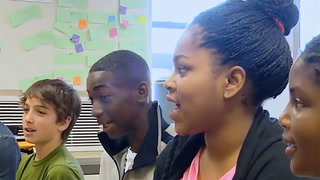
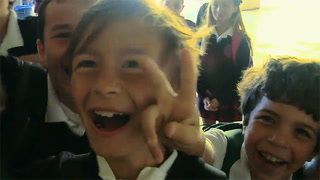

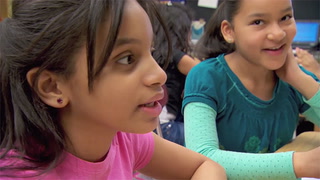
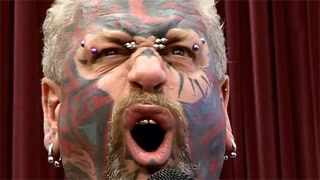
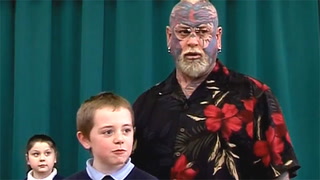
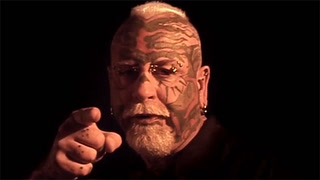








3 Comments
Rebecca Hager Oct 3, 2018 12:29pm
This is great, but I'm interested in those golden dustpans in the background. What are those? ;D
Bryan Staton Apr 28, 2015 8:23am
THUY TRUONG Aug 25, 2012 5:34pm